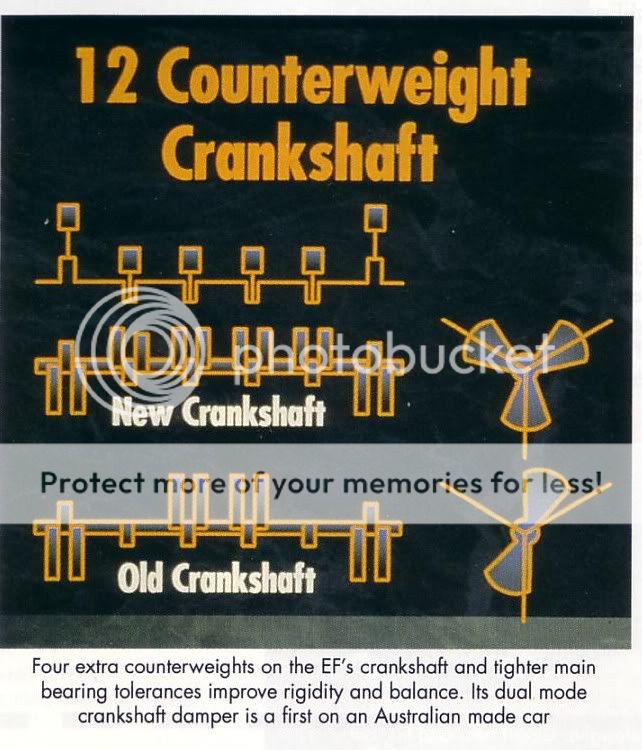Our Aussie Falcon I6's never had a proper 12 counterweight crank from 1960 to 1993. Then they copied GM-Holden, and basically made this upgrade from the EB2 Falcons 8 counterweight crank.
The early GM Holden L6's from 1963 to 1980 had a cast iron crank, which would resonate between 4500 to 5500. Holden solved it by using a steel crank, 12 pounds heavier for a 2.2" main bearing, 1.9" crank pin item.
The cost of a steel crank on all Holden's 2-bbl and EFI 2.8 and 3.3 in line engines was excessive for Holden, so a 12 counter balance nodular iron crank, 18 pounds heavier than the earlier one was used.
The resonance point was shifted up to 7500 rpm, where no-one would notice it.
As long as the crank runs fully balanced by a specialist, then you can run 12, 8 or 6 counterweights.
I don't pretent to know anything about the balance of an I6, but certainly know that the heavier the crank, the higher it can rev before critcal resonations kick in. There a special order vibration which moves along and back through the whole block centres, very much like a gaint tuning fork. If you use 12 counterweights, it raises the revs at which the crank reverberates/resonates or chimes. Every fixed or revolving object, when moved by a a horizontal or vertical lift resonates.
In my work as a lab technician doing quality assurnace tests for earth dams and land reclaiation, we used to determine maximum densities for various kinds of vibration amplitudes. So you could set up a 100 pounds of aggreagate, and adjust a 60 Hertz power supply to any height or frequency of vertical jolt, and see how well compacted you could get it.
One ASTM, Bureu of Reclamation and New Zealand standard actually covers it. Anyway, you would draw two converging lines, (on horizontal, and one at 5 degrees and scale off the amplitude or the vibration by how much the 250 pound table would converge the marks by.
Basically, if you find the point at where the engine goes rough, you can get a small mpeg recording in the engine bay, and read off the vertical jolt. If you add the counterweights, the jolt amplitude will be reduced.
British firm Tickford engineering (who were Aston Martins consultant engineers), found Fords old I6 crank was a disaster, with a coinsiderable amount of vibration causing a reduction in the longer term 300 hour wide open throttle fatigue life. Risks were that above 225 hp at 5000rpm in an OHC I6, the service life would be worse than the stock 190 hp version at 4500 rpm. There solution was to reduce the power to 221 at 4600 rpm, below a certain critical level, and they suggested (from Aston Martin experience with high rpm steel cranks in soft aluminium blocks) that Ford Australia use a better 12 counterweight crank.
And thats what Ford did. Since 1993, they have changed the main bearing size from 2.4 to 2.65" diameter, which has again allowed a much higher rev range, and an ability for custom cranks of the same design to hack brief 45 psi turbo tiraids to 1500 hp.

